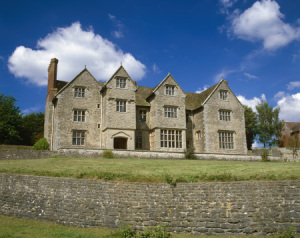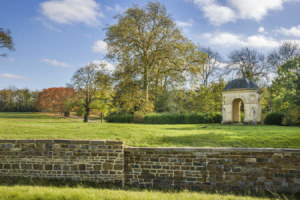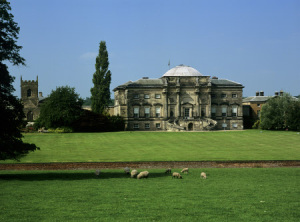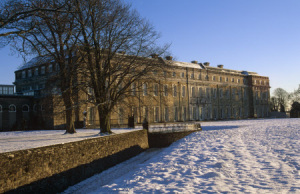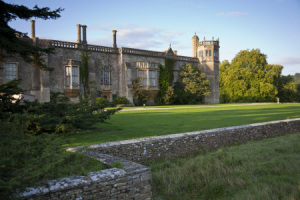Planning your next trip to the U.K.? Add The Royal Oak Foundation’s top five ha-ha’s to your itinerary.
By Chelcey Berryhill, Development and Communications Coordinator
What exactly is a ha-ha you ask? If you’re an architecture-enthusiast like myself, you sometimes miss those important features of historic gardens because of your beam-like focus over cornices and decorative lintels. Now you can add the ha-ha to your vocabulary and impress your peers at your next social gathering.
Emile Bruijin from the National Trust explains “The ha-ha, a ditch with a wall built along one side, was developed as an aesthetically pleasing way of keeping grazing cattle out of the pleasure garden. Even from a short distance the ha-ha is invisible, and its name is said to have been derived from the exclamations of surprise it provoked.”
Here are some of our favorite ha-has you can visit on your next trip to England, Wales, or Northern Ireland.
Wilderhope Manor, Shropshire
Beautiful Elizabethan manor house restored by John Cadbury in 1936. Even though the interiors are unfurnished, the architecture and charm of the manor are still a sight to behold. The home is also run by the Youth Hostel Association so accommodations in the lush English country side are available (the perfect way to admire those ha-has!).
Owned by one family for almost 350 years, whose story takes in royal visits, family feuds and debt, Stowe is a breathtakingly beautiful creation of the 18th century. It’s also one of the first and foremost of the great English landscape gardens. It reflects the work of two people in particular: Lord Cobham and his nephew, Earl Temple.
Stowe was also the site for The Royal Oak Foundation’s 2010 Damaris Horan Prize fellowship.
Take a trip back in time to the 1760s at this spectacular Neo-classical mansion framed by historic parkland. Designed for lavish entertaining and displaying an extensive collection of paintings, sculpture and original furnishings, Kedleston is a stunning example of the work of architect Robert Adam.
The vast late 17th-century mansion is set in a beautiful 700-acre deer park, landscaped by ‘Capability’ Brown and immortalised in Turner’s paintings.
Inside, the house contains the National Trust’s finest collection of pictures, with numerous works by Turner, Van Dyck, Reynolds and Blake, ancient and Neo-classical sculpture, fine furniture and carvings by Grinling Gibbons.
Lacock Abbey, located at the heart of Lacock village within its own woodland grounds, is a quirky country house of various architectural styles, built upon the foundations of a former nunnery. Visitors can experience the atmosphere of the medieval rooms and cloister court, giving a sense of the Abbey’s monastic past.
